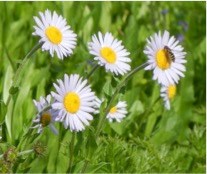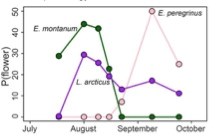Last updated: August 28, 2017
Article
Phenology and Climate Change
Importance
Subalpine wildflower meadows are a great draw for the > 1 million visitors to Mt.
Rainier National Park in the summer. Additionally, subalpine wildflower meadows host some of the highest plant and likely insect diversity (per unit area) of the park.

Status and Trend
Subalpine wildflower meadows are threatened by climate change. Temperatures have already increased by ~ 0.75 °C in the last century, and are expected to continue rising as humans continue to increase greenhouse gases (an additional 2-4°C warming is predicted in the next 100 years - Mote & Salathé 2009). Rising temperatures are likely to affect other climatic parameters, including snowpack (declining), date of snow meltout (earlier), severe frost events (fewer) and summer droughts (increasing). These changes will affect the phenology (i.e. timing of biological life events) of subalpine wildflower species, which could have implications for the pollinating insects that rely on them (Figure 1).

Discussion
Research by the HilleRisLambers lab at Mount Rainier National Park (Biology Department, University of Washington) examines the links between plant phenology (flowering) to microclimate variability (e.g. snow duration, temperature). Thus far, our research demonstrates that plant species differ greatly in their phenological timing, which presumably has implications for the pollinators visiting them (Figure 1, Figure 2).
